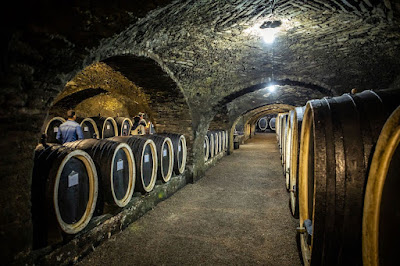Embark on a journey through the sun-kissed landscapes and ancient vineyards of Croatia, where every sip tells a story of tradition, passion, and unparalleled beauty.
Croatia, a gem nestled in the heart of Europe, boasts a rich cultural heritage, stunning natural landscapes, and a burgeoning wine scene waiting to be discovered. From the picturesque Dalmatian coast to the rolling hills of Istria and the lush valleys of Slavonia, Croatia offers a diverse tapestry of terroirs, each producing wines of unique character and complexity.
Croatia's Wine Culture
Unveiling Croatia's Wine Culture
Wine has been woven into the fabric of Croatian society for millennia, with evidence of winemaking dating back to the time of the ancient Illyrians and Greeks. Over the centuries, winemaking traditions have been passed down from generation to generation, resulting in a rich tapestry of indigenous grape varieties and winemaking techniques.
Exploring Croatia's Wine Regions
One of the joys of embarking on a wine tasting tour in Croatia is the opportunity to explore its distinct wine regions, each offering its own signature wines and terroir-driven experiences.
Dalmatia: Home to the sun-drenched islands of Hvar, Vis, and Korčula, Dalmatia is renowned for its robust reds and crisp whites, often crafted from indigenous grapes such as Plavac Mali and Pošip. Visitors can wander through vineyards clinging to rocky cliffs, visit historic wine cellars, and enjoy tastings overlooking the azure Adriatic Sea.
Istria: Located in Croatia's northwest corner, Istria is a paradise for wine lovers, with its rolling hills, medieval hilltop towns, and fertile soils. Here, visitors can indulge in elegant Malvazija whites, earthy Teran reds, and fragrant Muscats, all while exploring charming wine villages and olive groves.
Slavonia: In Croatia's northeastern region of Slavonia, vineyards thrive in the fertile plains along the Danube and Drava rivers. This is the land of Graševina, Croatia's most widely planted white grape, known for its crisp acidity and versatile nature. Visitors can immerse themselves in the rustic charm of Slavonian wine cellars, where oak barrels age traditional cuvées with finesse.
Vine Cellar
The Essence of Croatian Wine Tasting Tours
A wine tasting tour in Croatia is not just about sampling world-class wines—it's a journey of discovery, where each glass offers a glimpse into the country's rich history, cultural heritage, and deep connection to the land. Whether you're a seasoned oenophile or a curious novice, Croatia's wine tasting tours promise to delight the senses and leave a lasting impression.
.jpg) |
| Vine Cellar |
As we lift the veil on Croatia's wine tasting tours, we invite you to join us on a voyage of exploration and indulgence. From the sun-dappled vineyards of Dalmatia to the rustic wine cellars of Slavonia, Croatia offers a wine tasting experience like no other—one that celebrates tradition, honors terroir, and invites you to savor the essence of paradise in every sip.
Resources:
1. Croatian National Tourist Board
Comments
Post a Comment